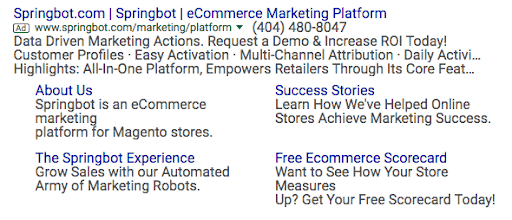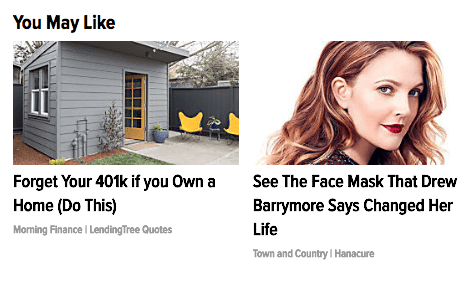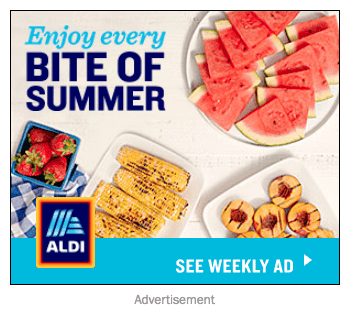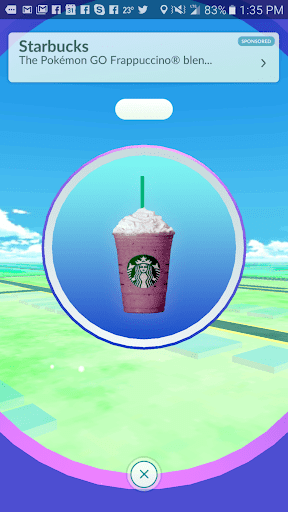eCOMMERCE MARKETER’S GUIDE
These days you can’t go on the internet without seeing native ads. You’ve probably seen one in the last five minutes and not even noticed it. Unlike standard display ads, native ads blend in with the content you’re consuming. But why are native ads so commonplace, and are they that effective?
There is a general sentiment among consumers that they “don’t want to see ads.” But that’s not entirely true. If you have a product or service someone is interested in, odds are they would like to hear about it. The way you approach that person is what makes the difference. Native advertising is about being a part of the conversations and experiences that your customers are already having. To be relevant and competitive, you need to approach online advertising the same way you would a cocktail party.
Have you ever been engaged in an interesting conversation with another person at a party only to have someone else chime in with a random comment? We’ve all been there, and it’s very annoying. That’s how consumers feel when their experiences are interrupted with an ad that isn’t relevant to them. It’s also why pop-ups and banner ads are so universally hated, and why so many marketers are turning to more subtle ways of capturing people’s attention.
But how do you create display ads that stand out to consumers without being disruptive? There are several ways you can leverage this technique in eCommerce, but context is everything. As you learn more about native advertising, consider who your customers are and how they consume content. What works for some companies might not work for you. The most important thing is to form a strategy that best fits your customer base.
That said, let’s take a closer look at the world of native ads.
THE BENEFITS OF NATIVE ADS.
Typical display ads are physically set apart from the on-page content that viewers find valuable. In contrast, native ads integrate into the content that users want to consume. What’s more, they are usually more relevant to the user and combine copy and images that pertain to the rest of the content on the page.
But do they work better than traditional marketing tactics? The research might surprise you. According to AdRoll’s native ad survey, these kinds of ads get 52 percent more views and bring an 18 percent boost in purchase intent compared with banner ads. Here are more benefits of native ads:
They Get More Time — According to Sharethrough, readers equally spend as much time viewing native ads as they do editorial content. That means that you have more time to make an impression and encourage a conversion than you would with a typical banner ad.
They’re More Effective — The same Sharethrough report showed that consumers view these kinds of ads as they would editorials, which means that they’re less likely to see them as a sales pitch, which could lead to more conversions. They may even interpret them as user-generated content, which can help boost your company’s reputation.
They Get More Engagement — Not only are users more likely to view native ads, but they’re also more likely to engage with the brands that post them. Native ads garner 53 percent more engagements than other kinds of ads. If your goal is action-oriented rather than awareness-oriented — like you want to attract more followers or subscribers — native ads are the way to go.
They’re More Relevant to Consumers — These days, it isn’t enough to design a one-size-fits-all advertisement for all customers. You have to leverage your demographics and data to build ads explicitly designed for your customer base. They help you reach the right customers in the places where they’re most comfortable.
These observations aren’t just empty words – it’s all backed by scientific research. Sharethrough and Nielson teamed up to study how users processed mobile ads and discovered that native ads receive two times more visual focus than banner ads. In other words, they capture consumers’ attention more effectively and get more engagement and view time. Rather than appearing in a user’s peripheral field of vision, they appear front and center, surrounded by information that’s relevant to the consumer.
RELEVANCE THROUGH RETARGETING.
We can’t overstate the importance of relevant advertising. But how do you make sure that you’re serving native ads to people who want to see them?
You’ve probably heard the term “retargeting” tossed around without context. One typical experience people have with retargeting is when they search for something on Google and immediately see an ad for it on social media. When done right, this technique is all about using the data you have on your customers to present them with content they want to see.
Retargeting is an essential tool for native advertising. There are two ways to go about it. The method described above is a form of “pixel-based” retargeting. This technique uses cookies to show ads on other platforms to people who have been to your website. The second method is “list-based” retargeting, which utilizes information that you’ve collected from your customers (ex. their email address) to serve up ads customized to them and their behavior. Using this method can help you create a seamless, unobtrusive experience for your target that can lead to a conversion.
But how do you make an ad blend in with regular content?
EXAMPLE OF NATIVE ADS AND THE SIX DISTINCT KINDS.
There are many different ways to make an ad look “native to its environment”. You can alter the format and design of the ad so that it appears aesthetically similar to what’s around it, or you can adjust the ad’s copy, so it ties into the page’s content. The Interactive Advertising Bureau (IAB) segments native ads into six distinct categories:
In-Feed Units — Sometimes referred to as “in-stream native advertising,” in-feed units are ads placed within the feed of a website, like Facebook or Twitter. They may be stories, videos, and app install ads or product listing ads.
Instagram Example of Native Ads: The Instagram ad below for Flaviar, a whiskey subscription service, is designed to look like a photo posted by an individual Instagram user — it doesn’t divert much from the customary look of a regular post — but is a “sponsored” in-feed native ad.

Paid Search Units — These display ads, also known as PPC (pay per click) ads, appear at the top of the search engine results page (SERP) when a user queries a search engine. They look and behave like organic search rankings, except they are ads.
Google Search Example of Native Ads: The Springbot ad below looks like an organic search listing, but it’s not. It’s part of an AdWords campaign targeting specific keywords. You can tell that search results are advertisements when they have the green “ad” image next to the URL.

Recommendation Widgets — Recommendation widgets use customer data to suggest similar content. They are placed directly onto editorial web pages — separate from the content — to entice a user to click through to other pages.
Example: The example below, taken from the Huffington Post, appears on a news story on both desktop and mobile. Advertisers may gather consumer data or use ad retargeting to remind users of a product or service they explored before, presenting it as a recommendation.

Promoted Listings — Promoted listings can be found on shopping websites, like eBay, Etsy, or Amazon. They look and behave just like regular listings, but they are ads for a particular brand.
Example: On Etsy, native ads often look the same as regular search results, with the only differentiator being the white “ad” icon at the top left. Advertisers may target consumers who have searched for similar products or bought from their store in the past.

In-Ad with Native Element Units — These kinds of ads look the most like typical display ads. You may see one on the side or top of a webpage. The thing that makes this kind of ad “native” is that it references something relevant to the content on the page.
Example: The Aldi ad below was on the page of an article with the headline “The Best Summer Appetizers.” In every way, it looks like a regular on-page ad. The only thing that makes it native is that its message is relevant to the content on the page.

Custom — Lastly, the IAB includes custom native ads in its lineup to account for the ads that don’t fit neatly into one of the other five categories. Custom varieties are often developed exclusively between a publisher and an advertiser.
Example: One of our favorite examples of a custom native ad is the integration of Starbucks advertising on the popular game, Pokémon GO. An essential element to the game are PokéStops, which are physical locations players go to and collect items that help them advance. A few months after the game launched, the app turned several Starbucks locations into PokéStops, with integrated advertising that looks similar to the stops that are unsponsored. Starbucks recognized that Pokémon GO targeted the same customer base and used the existing gameplay to its advantage.

HOW TO USE THESE ADS TO YOUR ADVANTAGE.
With all this in mind, it’s clear that you should consider developing native advertisements that appeal to your clientele. Here are a few great tips for getting started on leveraging native ads to bolster your eCommerce traffic.
Use Language that Fits — The goal of native advertising is to fit seamlessly on the page. Make sure that you’re speaking naturally, focusing on a voice that suits the platform and your core demographics. Your ad copy must come from a place of authenticity so that it will resonate with your target audience.
Know Your Demographics — The cardinal rule of digital marketing is to know your demographics, but this is especially important in native advertising. Develop a target audience using our eCommerce analytics software, and then spend some time researching your core consumer. Of course, you need to know where your user likes to spend time online, so you can funnel your advertising dollars into native ads placed on the platforms where they’ll get the most attention.
Think About the Subconscious — The Nielson and Sharethrough study also found that native ad headlines could be optimized to trigger specific word associations, which may subconsciously influence a consumer’s brand perception. Choosing words that foster positive emotions can help users develop a more positive view of your company or encourage them to take action.
Make it Interesting — When designing your next native ad campaign, think about your mental state while you’re browsing the web — you know that you’ll quickly scroll past posts that are uninteresting or irrelevant to you. The key to an excellent native campaign is to make it worthy of a user’s time without being too abrasive or disruptive to them.
Optimize Headlines — If you’re targeting millennials, you need to master the art of the headline. One in five users ages 20-35 read the headline exclusively. Think of the headline of your native ad as the content itself — if it’s not exciting, punchy, and engaging, your campaign is likely to be a flop. AdRoll emphasizes the importance of making your ad copy as a whole credible, trustworthy, and timely.
Research and Experiment — Before you launch any native ad campaigns, you should do a little research to know where you’re most likely to reach the most valuable customers; what works for one brand on Instagram may not work for another. Experiment with different platforms, and whenever possible, do A/B testing to see which of your headlines is most effective and where.
UP YOUR eCOMMERCE MARKETING GAME.
With so many brands vying for people’s attention, it can seem counterintuitive to make ads that blend in when you want to stand out. But the reason native ads work so well is that they play to the consumer’s subconscious. People naturally tune out what they don’t want and focus on what they need.
Native advertising puts you in the right place, at the right time, with the right message so you can make a conversion. Our eCommerce marketing automation tools can help you utilize the information you have on your customers to maximum effect. Find solutions that keep content fresh, relevant, and engaging with Springbot.




